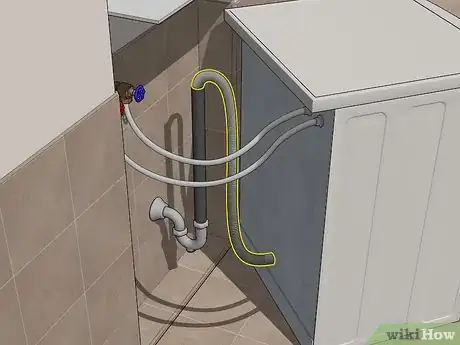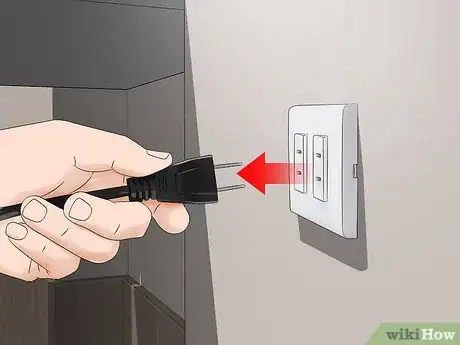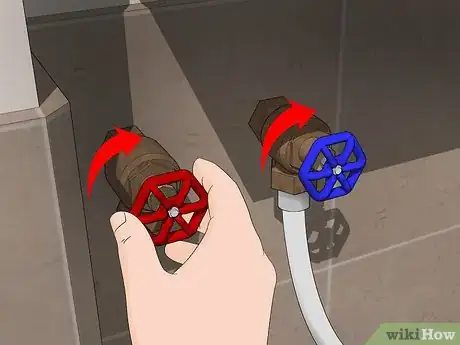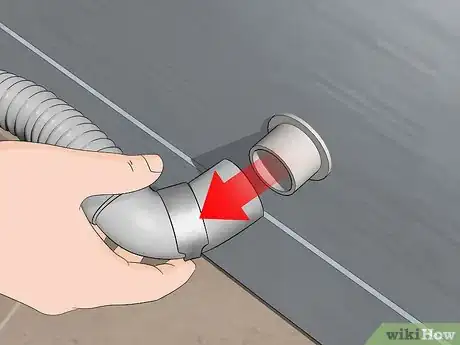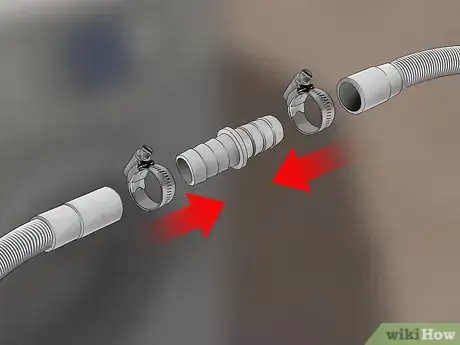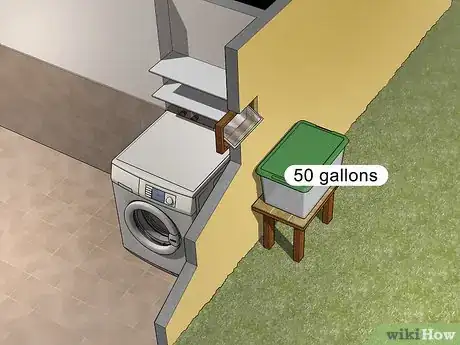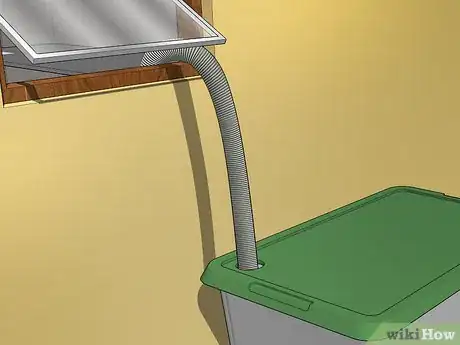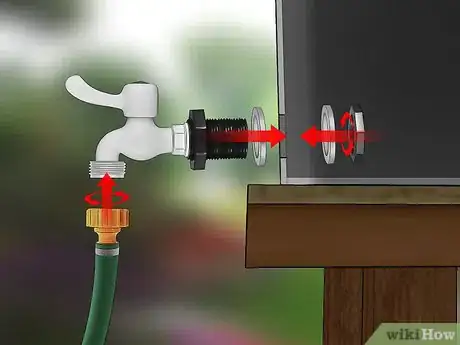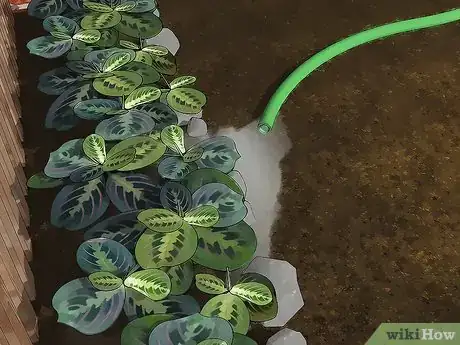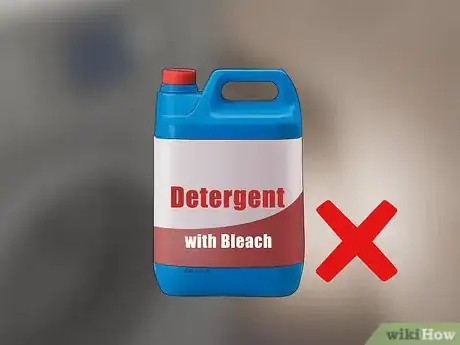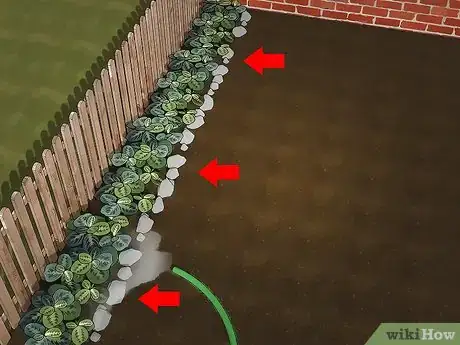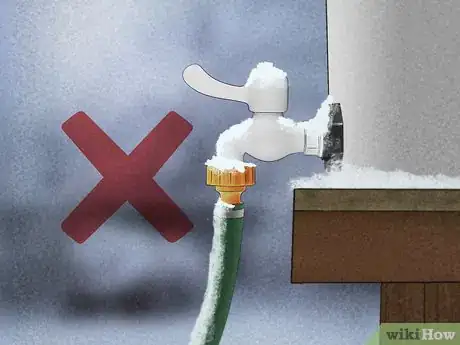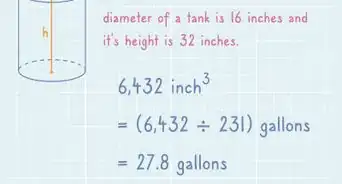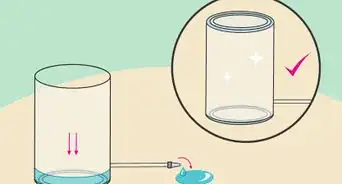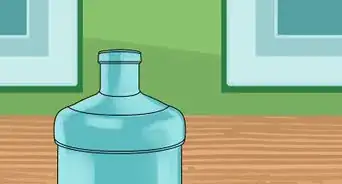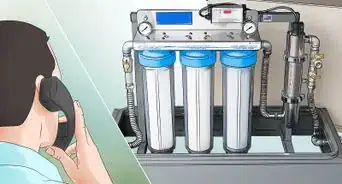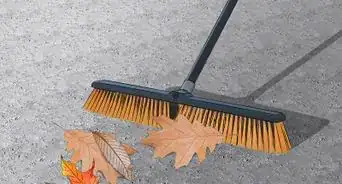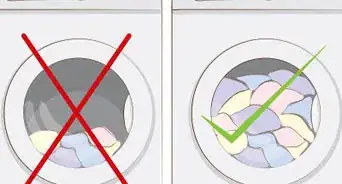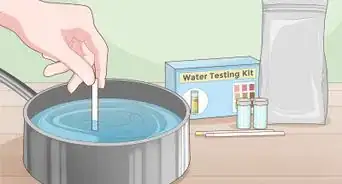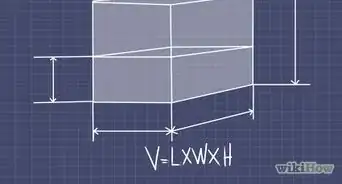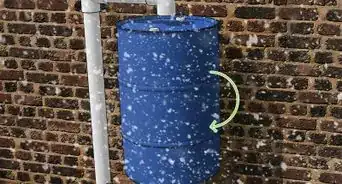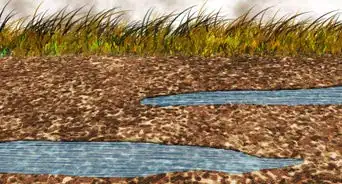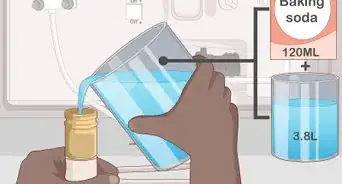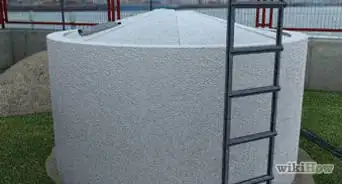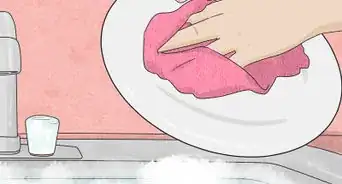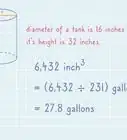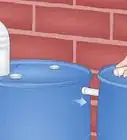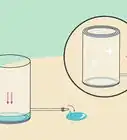This article was co-authored by wikiHow Staff. Our trained team of editors and researchers validate articles for accuracy and comprehensiveness. wikiHow's Content Management Team carefully monitors the work from our editorial staff to ensure that each article is backed by trusted research and meets our high quality standards.
This article has been viewed 73,697 times.
Learn more...
It’s important to save whatever whenever you can. You can actually reuse water from many appliances, such as your washing machine. Used water from these is called “gray water”, since dirt and soap have made it unsafe to drink. It’s different from “black water”, which is used water from a toilet and can’t be reused. If you want to reuse water from your washing machine, you’ll need to disconnect it from the sewage disposal system. Then you can set up a new drainage solution before being able to use the gray water.
Steps
Disconnecting the Washing Machine
-
1Find your washing machine’s discharge hose. You’ll find this at the back of your washing machine, running to a utility box in the wall. The utility box will have the hose itself as well as two connections to water valves. You’ll likely need to move your washing machine away from the wall for easy access to the discharge hose.[1]
-
2Unplug your washing machine’s power cord. Before touching the discharge hose, you need to make sure there is no electricity going into the washing machine. Since it’s likely you’ll splash a bit of water as you set up your gray water system, you risk getting shocked. Find the power outlet your washing machine is plugged into and unplug it.[2]Advertisement
-
3Turn off the water supply. You want to avoid any water running into the washing machine as you get to work. Find the two valves in the utility box and turn both to the off position.[3]
-
4Disconnect the discharge hose. The discharge hose will be the largest of the tubing at the back of your washing machine. It usually runs directly into your home’s sewage system through a hole in the wall. Simply pull the hose up and out; it should come free rather easily.
- You’re likely to splash water on the floor as you connect the discharge hose. Lay towels on the floor behind the washing machine and keep a bucket nearby.
- Set the hose in a bucket and let it drain completely before disconnecting it from the washing machine.[4]
-
5Attach an extension to the drainage hose. You can find extension kits at home hardware stores. They include a length of hose as well as a coupler, a small piece of plastic with two holes to insert the extension and the hose already attached to your washing machine. These kits have clamps that you can slide onto the coupler using pliers. They squeeze around the coupler, tightening the seal around the hose.[5]
Setting up a New Drainage Solution
-
1Set up a large plastic container near your washing machine. This container needs to be large enough to hold the significant amount of water used by a washing machine. While newer washing machines use 14 to 25 gallons (53 L to 94.6 L), older washing machines can use up to 45 gallons (170.3 L) per load. Err on the side of caution and use a container that can hold at least 50 gallons (190 L).
- If possible, your container should be set up in your yard, just outside the laundry room. This will make getting the gray water to your yard much simpler. Keep the container elevated with cinder blocks or bricks.[6]
-
2Run the washing machine’s discharge hose to the container. Put the hose into the top of the container. Water from your washing machine will flow into the container after each load of laundry.
- You can cut a hole in the container’s lid large enough to fit the hose. This will prevent water from splashing out of the open container.
-
3Install a length of garden hose at the bottom of the container. To do this, you’ll need to drill a one inch hole and insert a male pipe thread to garden hose thread adapter. This adapter will let you connect a garden hose to your container. Make sure the garden hose thread side of the adapter is coming out of the container.
- You can use a silicone gun to create a better seal at the bottom of the container. Just squeeze the trigger to put silicone all around the garden hose adapter. This will prevent any water from leaking out.[7]
-
4Lay the other end of the garden hose near a plant. The water will flow from your washing machine, through your hose and into the ground. You’ll be reducing the amount of water by reusing water from washing machine to water your plants.
- If your landscape doesn’t have any plants that need watering, add some wood mulch to your yard. The gray water will run through the mulch and into the ground without bogging your yard.[8]
Using Gray Water
-
1Avoid using detergents with bleach, boron, or salt. These chemicals are damaging to plants, and some are toxic to people and animals. If you intend to reuse water from your washing machine, you’ll need to keep a close eye on the contents of your detergent.[9]
-
2Move the hose around your yard frequently. Ideally, you should move it for every load. Otherwise, you’ll flood parts of your yard, potentially killing any plants that grow there. If you have multiple spots with plants that need water, move the hose to each plant between loads. Otherwise, you may simply have to let the water drain into your grass.[10]
-
3Dismantle your system for harsh winters. If you live in a climate where the ground freezes for a good portion of the year, you’ll need to avoid using gray water in the winter. Plants don’t need watering in this period, and draining gray water outside becomes a more complicated matter. If your system’s container is kept outside, you’ll want to at least disconnect your washing machine from it.
- Make sure to insert the drainage hose into the sewage disposal hole at the back of the washing machine.[11]
Warnings
- In some areas, reusing gray water may be regulated or illegal. Check your local laws and regulations.⧼thumbs_response⧽
- Improperly managing gray water systems can lead to odors, pathogens, or pests which can all cause health issues.⧼thumbs_response⧽
References
- ↑ https://www.hunker.com/12001116/how-to-disconnect-a-washing-machine
- ↑ https://www.hunker.com/12001116/how-to-disconnect-a-washing-machine
- ↑ https://www.hunker.com/12001116/how-to-disconnect-a-washing-machine
- ↑ https://www.hunker.com/12001116/how-to-disconnect-a-washing-machine
- ↑ https://www.youtube.com/watch?v=qkXCzW4dXwI
- ↑ https://greywateraction.org/laundry-drum/
- ↑ https://greywateraction.org/laundry-drum/
- ↑ https://www.treehugger.com/green-home/how-reuse-grey-water-home-and-yard.html
- ↑ https://greywateraction.org/greywater-reuse/
About This Article
Saving water from your washing machine to use in your garden is a great way to be environmentally and economically friendly. Start by unplugging your machine and finding the discharge hose, which you'll find at the back of your machine connected to a utility box. Turn off the water supply before you disconnect the discharge hose. Then, place a large plastic container near your machine and add an extension to your discharge hose so the water dumps into the container. Install a length of garden hose at the bottom of the water container. Extend the hose to your outdoor plants or mulch so you can water them with your used washing machine water. To learn how to disconnect your system during cold weather, keep reading!
